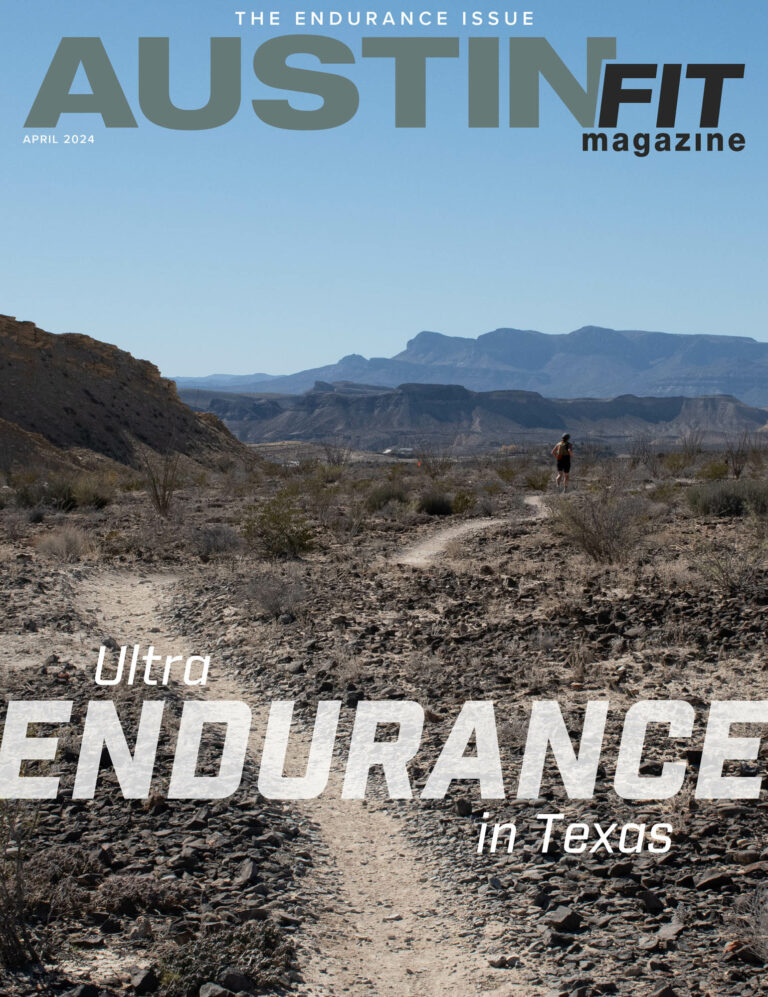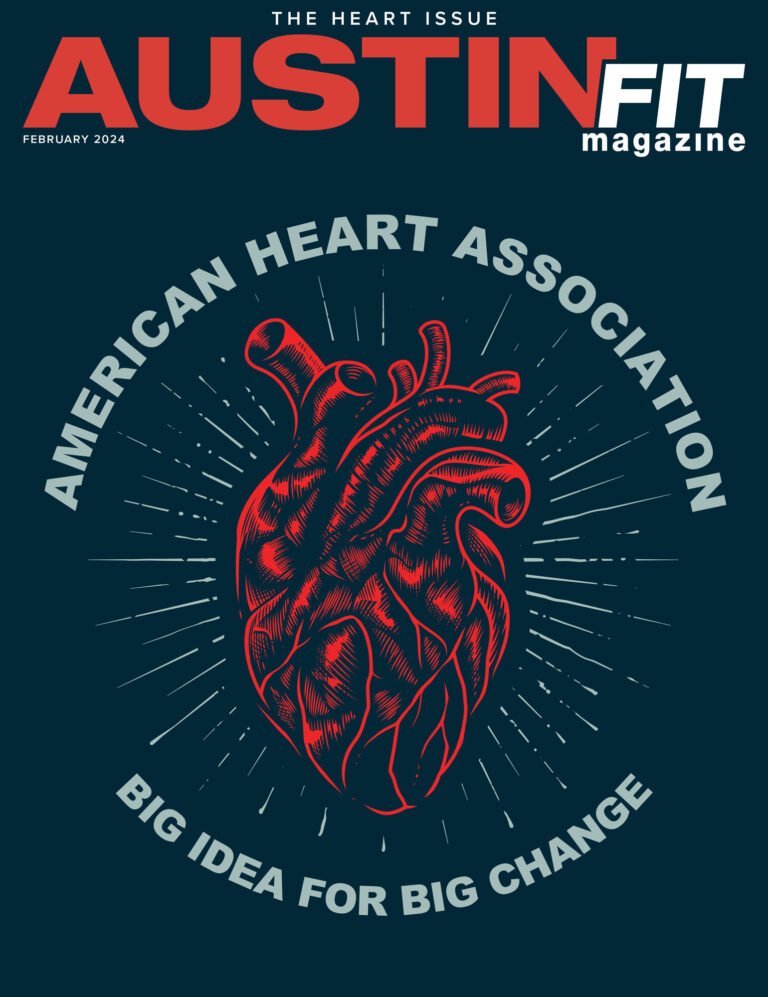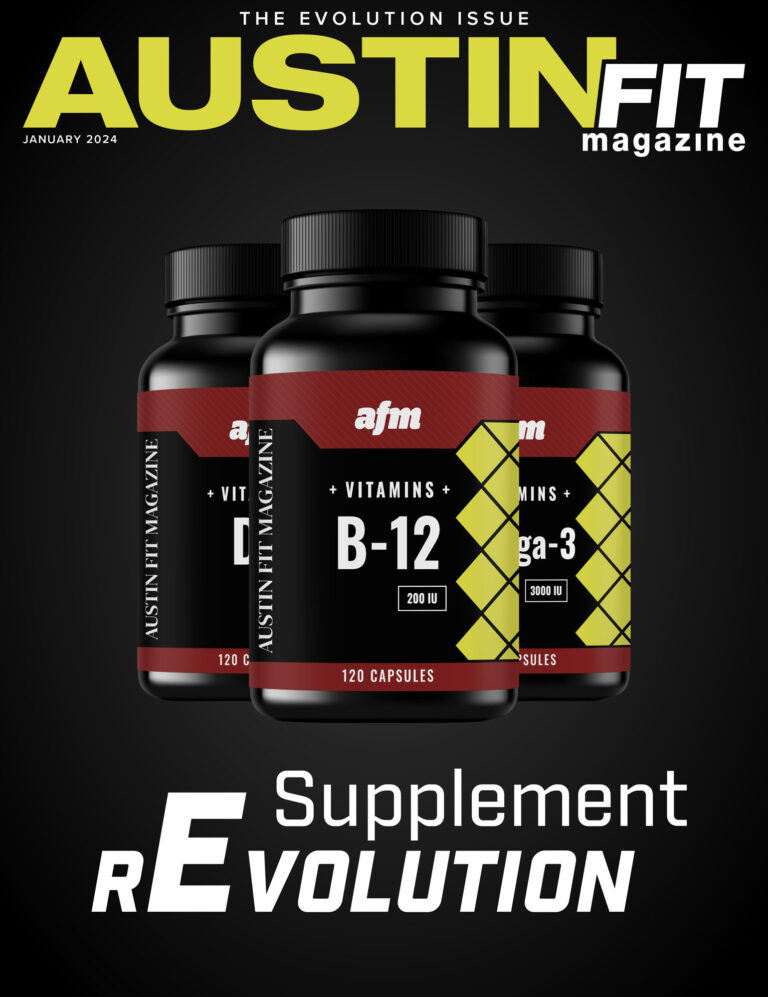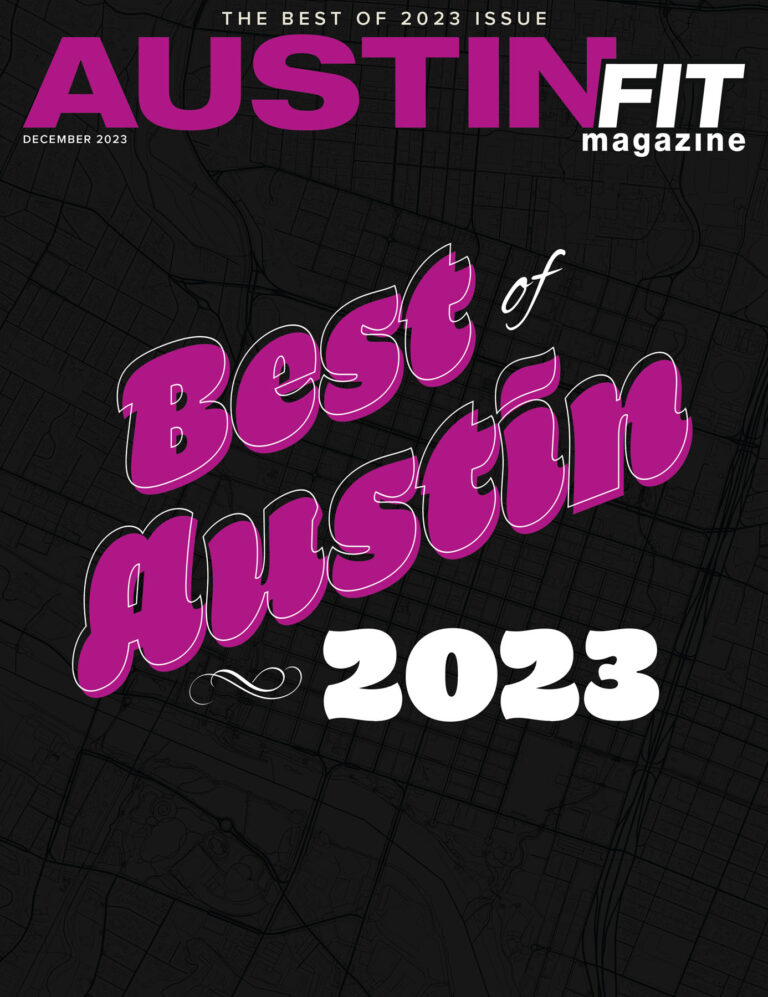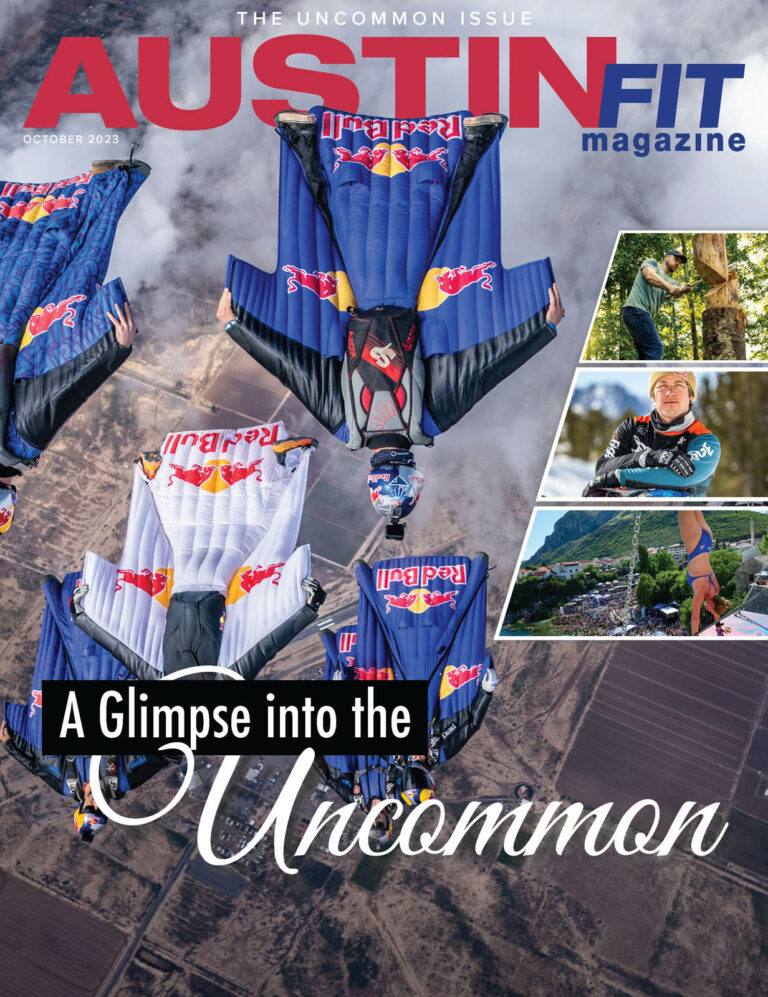Moving Through the Hours at Ballet Austin
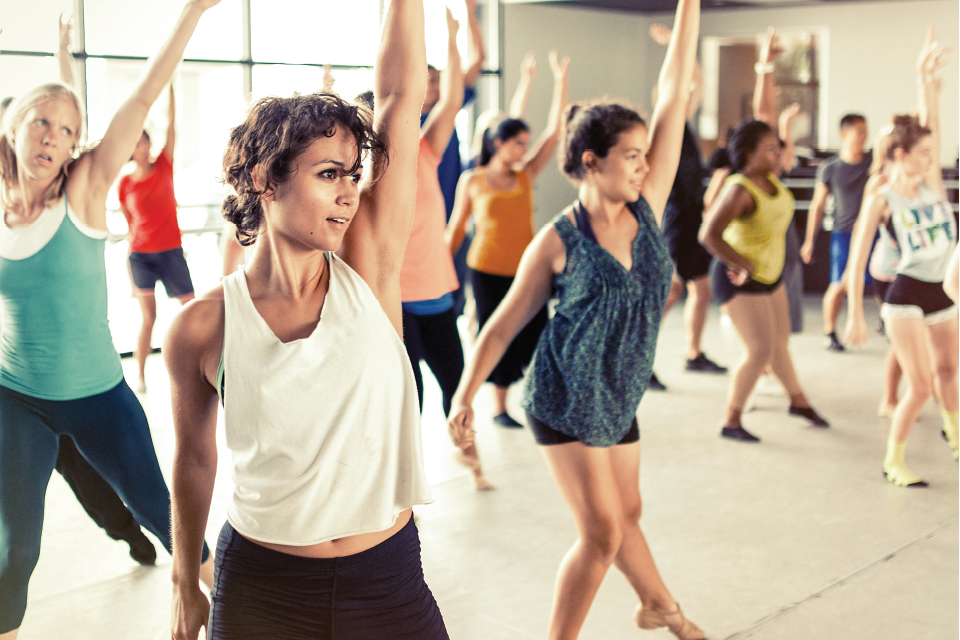
The sleek building is tucked on the corner of West Third and San Antonio Streets. At night, a bank of windows reveals a large studio with soaring ceilings and a baby grand piano nestled in a corner. Light blazes forth, illuminating the watchers outside on the sidewalk. It’s been a long and busy day at Ballet Austin, one of the city’s brightest fitness jewels.
Ballet Austin is well known across the United States as a prominent dance company; it’s the 12th largest in America, and has been described by The New York Times as “a company with big ambitions.” What Austinites might not know is that Ballet Austin has big ambitions beyond being a nationally recognized troupe—it has a passion to bring health and wellness through dance to the entire community, and the organization is exceeding expectations. While Ballet Austin had once hoped to draw in 500 unique students through the then-new Butler Community School, that number was eclipsed in only five years; registrations have swelled to 5,000, some 4,000 of those in activities other than ballet.
AFM visited Ballet Austin recently to sample the many and varied opportunities for dance and fitness, and what follows is a representative look at one day of classes at this beautiful facility.
9 AM – Ballet (Intermediate/Advanced)
The morning (and the rest of the day) belongs to the dancers in the Company, which is under the artistic direction of the renowned Stephen Mills and the guidance of executive director Cookie Ruiz. In late August, the professional dancers return and begin rehearsing the first performance of the season (this year is Stravinsky’s The Firebird, on Sept. 26–28). During the summer, students in the Ballet Austin Academy come to learn; older dancers, ages 9 through 22, can participate in the Junior and Senior Summer Intensive Programs, from which members of the Ballet Austin II (a paid apprentice company—think “semi-pro”) are chosen and Butler Fellowship Grants are awarded. These fellowships are, according to Academy director William Piner, “the bridge between the professional company and the Academy”; national auditions for the Senior Intensive Program in January and February of 2014 brought in 270 students from three countries, 35 states, and 119 cities, and 15 fully underwritten Fellowships are available this year.
10AM – Stretch, Massage & Relax with Foam Rollers
This class is a mix of dancers and fitness-minded folk. Mother and daughter Karen and Kathleen Rector have been attending since they moved to Austin from Arizona. Kathleen’s dance teacher had recommended she seek out Ballet Austin, and mother Karen attends to increase her flexibility after having her meniscus removed. “You can go home and stretch,” she said after class, “but very few of us do a good job and here, there’s something new and different every time.” Ruiz echoed Rector’s comment: “A lot of what we do here is somewhat recuperative,” and she referenced free classes offered for breast cancer survivors that address loss of range of motion. In this class, the room was darkened and music played softly. Foam rollers, stretch bands, med balls, and mats were available for use, and the instructor provided modifications and hands-on adjustment. Ages of participants ranged from teens to 50-year-olds.
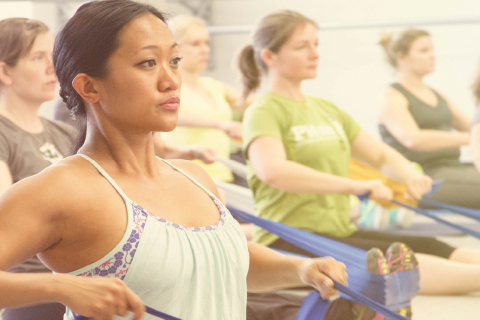
Also going on at 10 a.m. was the Kids in Motion Broadway Kids Camp. This particular session for boys and girls ages 4–10 focused on Disney musicals, with instruction in singing and dance. There were some 50 youngsters in the group, which was divided into age-based segments for additional practice later in the day. Instructor Madison Piner had them all rapt with her spirited guidance through the steps and songs, and pianist Shawn Ellison provided live accompaniment. Piner, a dance major performing in Chicago this fall, was also this year’s camp director and, according to Academy director William Piner (her father), a graduate of just such a summer camp before growing through the Ballet Austin Academy ranks. “We like to grow our own, as well as recruit nationally, to find the best talent possible,” laughed the elder Piner.
11 AM – Ultimate Lower Body Workout
Many of those from the previous class progressed on to this next workout, and new attendees filtered in. Strength is important in ballet, and Ruiz pointed out that artistic director Mills is not interested in a “waify” look. “He has a very holistic approach to what a dancer looks like,” she said. “Musculature and vitality are needed for [Mills’] choreography.”
NOON – Pilates Cardio Workout
In order to stay healthy and strong, Ballet Austin includes a state-of-the-art Pilates center that is open to all. The facility has received numerous “Best of “ awards from Austin Fit Magazine readers and is open seven days a week; many of Austin’s elite athletes take advantage of the facility, but the average Joe and Jane are found there as well. There are special Pilates classes aimed to help seniors with balance and strength to avoid falls—their oldest student is 93, and many are older than 80. “We really want Austin to be moving and to be fit, and to be fit, you have to keep moving,” said Ruiz. Also offered at noon is Zumba Dance Fitness. As Ruiz laughingly said, “Yes, we have the buns…and right next door to some of the finest dance pros in the U.S., people are trying to figure out the moves to ‘Single Ladies.’ No one is ‘timed out’ of movement here at Ballet Austin.”
1–5 PM – Company and Academy Practices
During the afternoon hours, the Company practices and Academy classes continue. In the Junior Intensive II class, the room was full of young girls, approximately 9–13 years old, in leotards and dance shoes. The instructor led the group through a series of dance positions, moving to offer minute adjustments to foot placement and posture. He kept the class in constant activity, fluidly demonstrating and instructing. His students were attentive and clearly skilled—this was no summer camp workshop but a highly focused group of serious dance students.
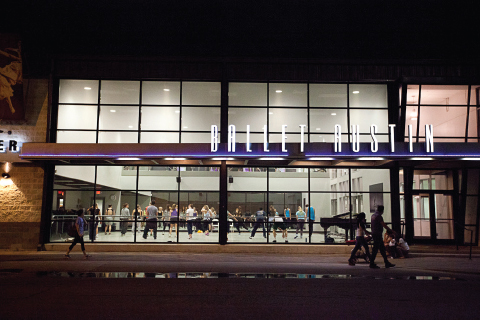
There are seven studios in the building. Monitors mounted throughout the location provide lists of class locations. Each studio is named for important figures in the nonprofit organization’s 57-year history: Armstrong/Connelly, AdlerLand, AustinVentures Studio Theater (a performance space), Mills/Ruiz, Kodosky, Shiflet, and Hermann/Verastique. The building combines the former Austex building with new construction—there’s a slight rise in the floor where the two join. Though the building is only 7 years old, the combined groups (Company, Academy, Butler Community School, box office, and administrative areas) are close to outgrowing the 34,000 square foot space. Every room is utilized throughout the day.
Ballet Austin is downtown, so parking must be considered. There are 23 spots in the facility’s lot; street parking is free after 6 p.m. on Monday, Tuesday, and Wednesday and all day Sunday (limit is 3 hours). An easy option is to park two blocks away in the City Hall Garage, which is free with validation from Ballet Austin between 8 a.m. and 5 p.m. (2 hours only) and on weekends before 5 p.m. without validation ($5 after 5 p.m.). Bike racks are located directly outside the building on San Antonio and Nueces, and the closest Capital Metro stop is at Second and San Antonio.
Ballet Austin is full of the sounds of music and movement, a very vibrant and active environment. And when the community pours in for the evening hour classes, the thrum is electrifying.
5:45 – Ballet Barre Fit
Barre classes are trending in gyms these days, but who better to specialize in this than, well, the ballet? Women of all ages make up the workout class; the instructor led a warm-up and then asked, “Shall we dance?” Music is such an integral part of the class experience at Ballet Austin—and when you want to download the playlist, it’s good. The class incorporated barre, mat, and resistance bands (supplied); the instructor provided modifications and corrections; the workout was challenging.
6:45 PM – Beginning Ballet
This is the class for adults who haven’t danced (Elementary Ballet is for those who’ve had a couple of years of instruction). The class was full—men and women of all ages in a variety of dress, from three-quarter tights and T-shirts to ballet leotards and slippers (recommended for ballet classes). The class met in the Armstrong/Connelly studio, the large room facing West Third Street. Many participants were clearly hurrying in after work. There are cubbyholes in the studio for personal items, and the building has showers and lockers for changing. A pianist provided accompaniment, and the relaxation in the room was almost palpable as students and teacher moved into what was clearly familiar routine.
7:30 PM – Cardio Pop
Cardio Pop delivers non-stop movement and the opportunity to sweat—a lot. Top 40 music is integral; the instructor demonstrates sets based on cheer and dance moves that were combined and repeated throughout the song. The emphasis is on continual movement, even if the exact step proved elusive. Class members were on the young side. Jeanne Martinez and Michael Lopez started attending in March as part of a $99 promotional deal with unlimited classes. Friends from high school, the two young professionals share a dance background. Martinez is getting married in December, and Lopez is her best man—they’ve been using Cardio Pop to get in shape for the big day. “We go two or three times a week,” Martinez said. “We’ve both noticed a big difference in our endurance and physique.” Lopez agreed: “We look forward to this every week. It used to be that we’d meet for happy hour; we’ve substituted dance, and it’s helping us live a better, healthier lifestyle.”
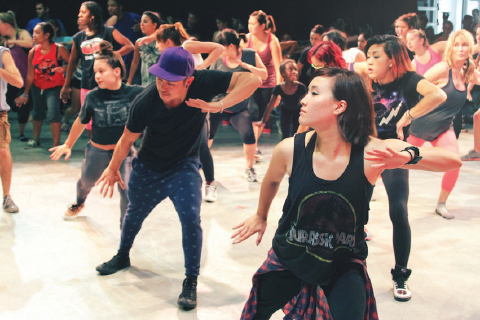
8:30 PM – Hip Hop (Intermediate Level)
Utterly mesmerizing to watch (and yes, it’s possible to watch workouts through the many windows, upstairs and down, in the larger studios), this higher-level class wasted no minute. Instructor Shepherd Allen demonstrated moves slowly, calling out instructions; the class practiced with him, without music; he performed with music; and the class then put it all together on their own. A wide range of skill was evident but the enthusiasm was constant, and the vibe was certainly hip and fresh. No ballet buns or leotards in sight.
And this is just a glimpse of the variety Ballet Austin has to offer. In addition to short seasonal classes, like Videodance—which teaches choreography to the likes of Beyoncé and Michael Jackson—other courses include Weston African Dance and Drums, Jazz Contemporary, and Hawaiian Dance, among many others. To find a fitness fit, visit balletaustin.org, where class description and requirements (dress, equipment) are provided.
